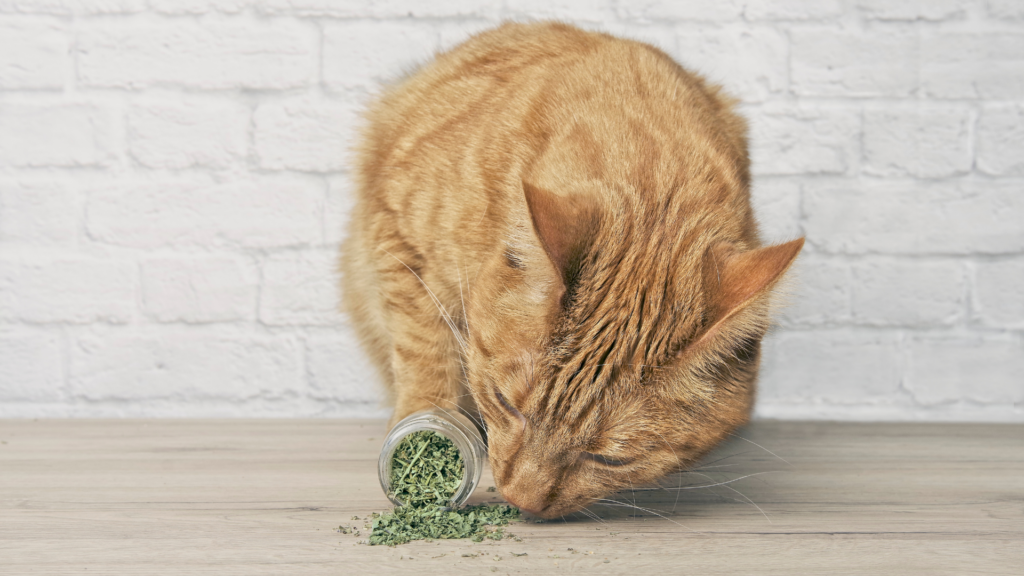If you have a cat, you’ve likely treated them to catnip at least once. And, if your cat is one of the lucky ones that has inherited the catnip sensitivity gene (more on that later), you know that even a small dose can cause an instant behavior change. This magical plant can turn even the laziest cat into a furball of energy, providing them with a sense of euphoria that makes them purr uncontrollably and stay entertained for up to an hour.
But how does catnip work, and why does it have such an effect on your cat? It’s part science, part genetics. Read on as we explain.
What is Catnip
Put simply, catnip is a plant. The term “catnip” is derived from the intense attraction most cats have toward the plant, but its official name is nepeta cataria. The plant is a perennial herb from the mint family, and can grow to be up to three feet tall. It’s often found in the gardens of homeowners in warmer climates because it’s known to be drought-tolerant, deer resistant, and even deters mosquitoes.
Along with attracting cats (and butterflies!), the nepeta cataria plant is even used in some herbal teas due to its sedative effects, making it just as relaxing to humans as it is to cats.
How Catnip Works
Believe it or not, catnip sensitivity is hereditary, and is only passed down genetically through about 50% of cats, meaning 50% of cats have no reaction to the plant at all. Additionally, catnip sensitivity doesn’t develop until a cat matures to about 3 – 6 months, and wears off in more senior cats, who may simply mellow-out if exposed to the plant. However, for average-aged cats that have inherited the catnip sensitivity gene, the instant high the plant provides is pretty strong.
Cats get high off catnip by inhaling nepetalactone, the organic compound found in catnip. Nepetalactone binds to receptors inside a cat’s nose, which stimulates sensory neurons leading into the brain. This not only alters brain activity, but also the cat’s overall emotions, triggering intense, almost intoxicated-like reactions in (most) cats.
So why are cats drawn to catnip and keep coming back for more? Some scientists believe that their brain interprets nepetalactone as cat pheromones, which causes a spike in hyperactivity and pure joy. Additionally, it acts as a natural mood enhancer, which may explain why cats are drawn to the scent.
How Your Cat Can Safely Enjoy Catnip
There’s no evidence that suggests catnip is unsafe, and experts believe overdosing is unlikely. However, prolonged cantip use can decrease its effectiveness, so it’s recommended to use catnip in small doses (like once a week) as a special treat during playtime with your cat.
The simplest way to use catnip is to purchase it dry and sprinkle some on your cat’s toys. Or, for a mess-free play session, you can always purchase a toy mouse or other cat toy that comes with catnip in it.
Catnip can also be a great tool to help train your cat to use their scratching post. Sprinkle a bit on the post and watch them scratch away to get the scent on their paws.
While the effects of catnip are not long-term, and usually wear off within thirty minutes to an hour, it can be a fun treat to give your cat to help enhance their mood and bring some joy to their day. Just be sure to limit the amount of catnip you give your cat to about once a week to avoid limiting its effectiveness.


